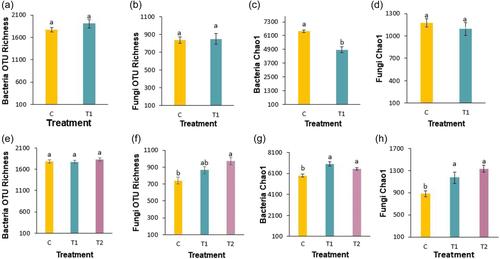Harnessing synthetic communities (SynCom) of plant growth-promoting (PGP) microorganisms is considered a promising approach to improve crop fitness and productivity. However, biotic mechanisms that underpin improved plant performance and the effects of delivery mode of synthetic community are poorly understood. These are critical knowledge gaps that constrain field efficacy of SynCom and hence large-scale adoption by the farming community.
In this study, a SynCom of four PGP microbial species was constructed and applied to either as seed dressing (treatment T1, applied at the time of sowing) or to soil (treatment T2, applied in soil at true leaf stage) across five different cotton (Gossypium hirsutum) cultivars. The impact of SynCom on plant growth, rhizosphere microbiome and soil nutrient availability, and how this was modified by plant variety and mode of applications, was assessed.
Results showed that the seed application of SynCom had the strongest positive impact on overall plant fitness, resulting in higher germination (14.3%), increased plant height (7.4%) and shoot biomass (5.4%). A significant increase in the number of flowers (10.4%) and yield (8.5%) was also observed in T1. The soil nitrate availability was enhanced by 28% and 55% under T1 and T2, respectively. Results further suggested that SynCom applications triggered enrichment of members from bacterial phyla Actinobacteria, Firmicutes and Cyanobacteria in the rhizosphere. A shift in fungal communities was also observed, with a significant increase in the relative abundance of fungi from phyla Chytridiomycota and Basidiomycota in SynCom treatments. A structural equation model suggested that SynCom directly increased crop productivity but also indirectly via impacting the alpha diversity of bacteria.
Overall, this study provides mechanistic evidence that SynCom applications can shift rhizosphere microbial communities and improve soil fertility, plant growth, and crop productivity, suggesting that their use could contribute toward sustainable increase in farm productivity.


